The road to the 2024 edition of Copa América has been a rollercoaster for Brazil. The Seleção’s fans, usually a pillar of confidence, are entering the tournament with a hint of uncertainty. This is in stark contrast to the high spirits of their arch-rivals, Argentina, who are basking in the glory of a recent FIFA World Cup victory.
To turn our attention elsewhere in the football world for a brief moment, after Real Madrid’s outstanding season seeing the Spanish giants securing the league title and picking up their 15th UEFA Champions League, many tip Los Blancos to enter another period of domination. Having undergone a transitional period that saw stars such as Ramos, Benzema and Ronaldo leave, Madrid navigated this new chapter through excellent recruitment. Signing some of the world’s elite young talent has been a principal reason for their predicted future at the top. Stars such as Bellingham, Camavinga and Tchouameni are still several years away from reaching their peak.
One of the intriguing aspects of Real Madrid’s last season was the performance of the Brazilian duo, Vinicius Junior and Rodrygo. These wingers formed a formidable strike partnership, contributing significantly to Real Madrid’s double win. However, the arrival of Mbappé has raised a pressing question-where will these Brazilian forwards fit in the team now?
The answer to this problem, along with the tactical problems within Brazil’s squad, which certainly isn’t the strongest lineup they’ve ever had, may be discovered during the Brazilian national team’s quest to win the Copa América this summer. Many believe Carlo Ancelotti will change the shape of his team to accommodate the talent he has at his disposal. This will most likely involve using a lone centre-forward.
In this year’s friendly matches Brazil have played both Vinicius and Rodrygo as their sole number 9. Along with the two established attackers, Real Madrid’s latest Brazilian acquisition, teenage sensation Endrick, has provided backup on the bench and will prove to be a different option for both Brazil and his new club. This tactical analysis and team-focused scout report will seek to provide an in-depth analysis of how all three players fulfil the role of Brazil’s centre-forward within the team’s tactics, assessing both their strengths and weaknesses.
Position
All three of these players line up very differently when playing as a centre forward. Even when playing as an out-and-out number 9, Vinicius still drifts out to his favoured left-hand side. Through drifting out to the flank, Vinicius seeks to use his strengths of his pace and ability to dribble by players.

As seen here, Vinicius is on the blindside of the left centre back’s shoulder. This is a clever position to take up as he can go undetected, giving himself a real advantage over the centre-back. Using his pace, eaten in behind the defence, allowing Brazil to get into a promising position.
Vinicius pulling out wide as the centre-forward creates a variety of problems for defences. Moving out wide helps not only create overloads for his side to take advantage of but also stretches the opposition’s backline, with defenders often having to follow him out of position.
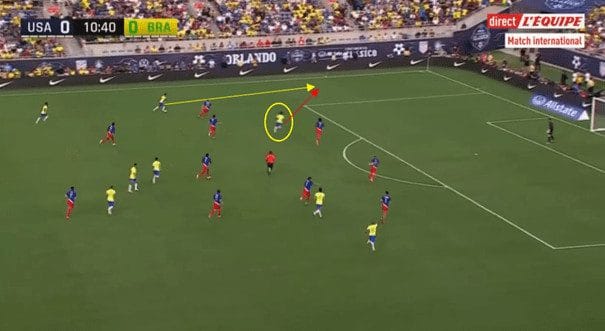
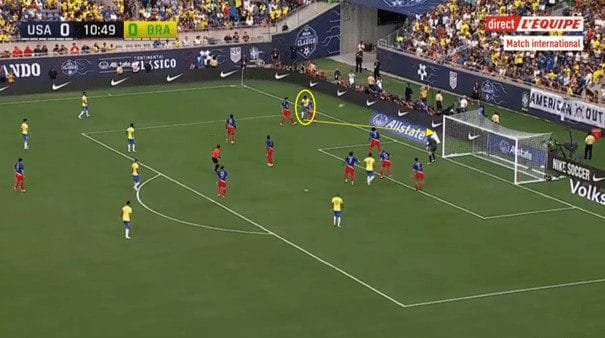
In this example, Vinicius makes an off-the-ball run down the channel. The central defenders hesitate and are unwilling to follow him, allowing him to get on the ball. Despite him receiving the ball free out wide, as he crosses the ball, very few of his teammates are in the box to attack it, leading to it ending up straight in the hands of the goalkeeper. This is the one major disadvantage of his continual preference for drifting out wide as the number 9. It leaves his team without their main goal threat in the box.
Rodrygo has been Brazil’s most used number 9 over the last 12 months. He plays the role of a False 9, dropping deep to help his side progress in the build-up. When compared with other Forwards in La Liga, Rodrygo has a percentile rank of 97 for progressive passes received, demonstrating his ability to drop into dangerous pockets of space to get on the ball.
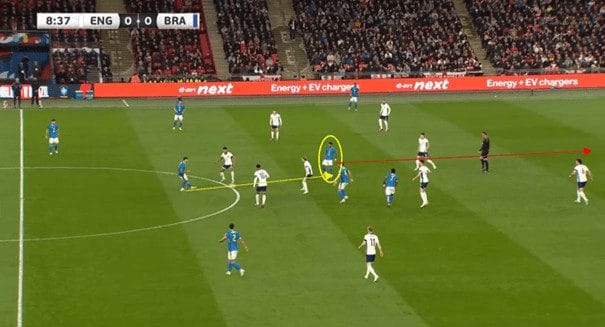
In this situation, Rodrigo takes up a dangerous position between the lines of the opposition, giving him plenty of space to operate in. This gives him the ability to turn, drive forward, and eventually get a shot off. This role plays to many of Rodrygo’s strengths; however, it does have its drawbacks, similar to Vinicius’s tendency to move out wide.
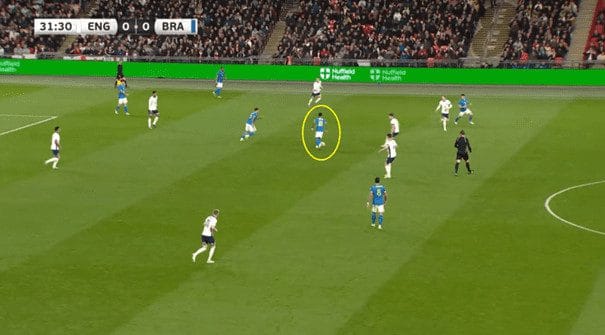
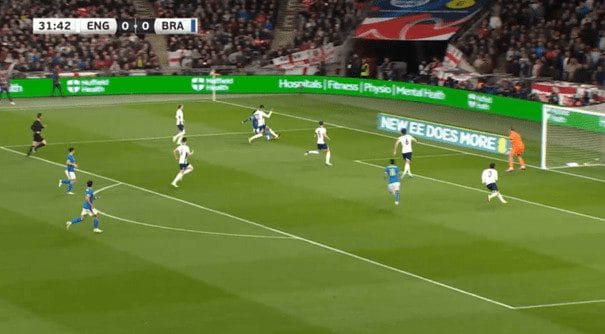
In this example, Rodrygo has come deep in his own half to get involved in the build-up play. The ball is worked out wide, and Vinicius drives forward, getting in a position to put the ball into the box. Yet Brazil once again lack runners into the penalty area. Rodrygo had too much ground to make up after having been so involved in the initial build-up, which prevented him from being a threat in the box.
Where Endrick differs from his teammates is that he plays the centre-forward role in its traditional form. He looks to stretch defences and will normally stay centrally, providing more of a vocal point for his side. He is also more than willing to compete with opposition centre-backs for the ball.

Here, we see Endrick battling for a long ball. Despite being relatively small, he bumps the large centre back to ensure he’s first to the ball. This allows him to secure possession, helping his team progress up the pitch.
Although Endrick’s willingness to stay in forward positions has it’s benefits, his rigidness means he isn’t as effective in the build up play when compared with Rodrygo and Vinicius. During the 2023 Serie A season, Endrick only had a percentile rank of 51 for progressive passes received when compared with other forwards.
Link up Play
An essential part of every centre-forward’s game is how they link up with their teammates. All three have varying capabilities when it comes to bringing their teammates into the game. Vinicius Junior has had a decent season in terms of creating for his team, providing 11 assists and averaging 1.45 key passes per game. Vinicius does have a selfish element to his game which means he can choose the wrong option at vital times.
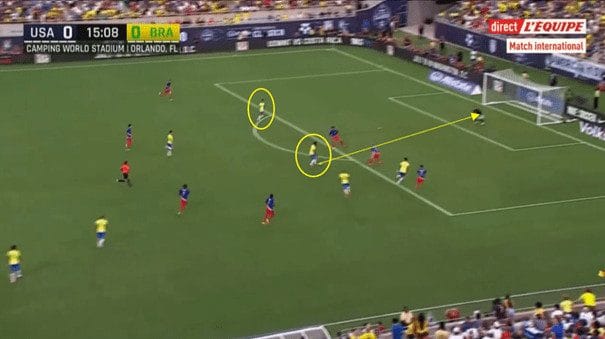
Here, we see Vinicius with the ball outside the penalty area. To his left, Rodrygo is in acres of space and would have a clear 1v1 with the goalkeeper if he receives the ball. However, he decides to shoot for goal himself and barely troubles the keeper. Playing as a forward this year has seen a decrease in Vinicius’s assists and progressive passes in comparison with last year, where he lined up predominantly as a winger.
Link-up play must be considered one of Rodrygo’s strengths. After dropping deep to receive the ball, he is brilliant at finding teammates and starting combinations that help his team progress up the pitch. Rodrygo outperformed Vinicius in progressive passes and shot-creating actions in La Liga this season.

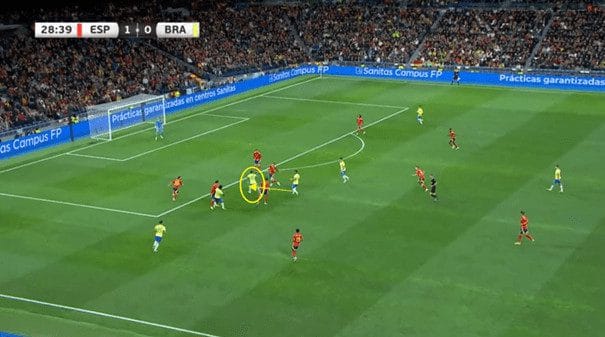
In this example, Rodrygo drops deep to get the ball. He combines brilliantly with his teammates, starting the move and then making a third-man run, allowing him to get onto the ball in the penalty area.
Endrick is still in the process of developing his ability to link up play. When looking at Endrick’s statistics, it can be clearly seen that he fails to act as a creator for his teammates. He failed to provide any assists last season. He also had a percentile rank of 77 for progressive passes during the 2023 Serie A when compared with other forwards.
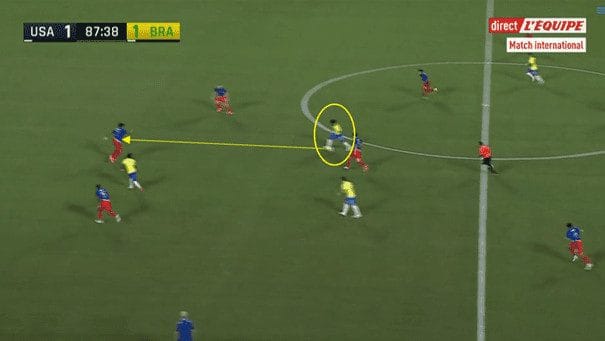
In this situation, we see clearly why Endrick fails to link play successfully. Endrick picks the wrong moment and technique to play the pass to his teammate, meaning it is easily intercepted. He needed to draw in the defenders and then play a pass for his teammate’s forward run. Last season, Endrick’s passing accuracy was only 71%, giving him a percentile rank of 51.
Defending from the front
More and More, the role of a centre-forward includes being the first line of defence. Strikers are essential in defending against the opposition’s build-up play. This is one element that Vinicius struggles with. In La Liga this season, he only had a percentile rank of 51 for Tackles and interceptions when compared to other forwards. A centre-forward is essential at effecting play when they press, ensuring they prevent forward passes. As a lone centre-forward, Vinicius does neither.
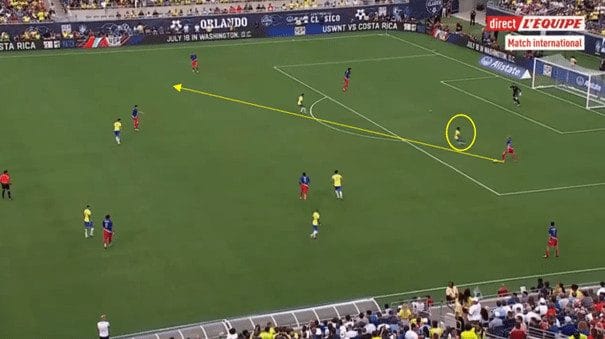
Rodrygo, at times, appears to be as ineffective as Vinicius when defending. He has averaged fewer tackles won per 90 minutes this season than his teammate in La Liga. However, Rodrygo has made a considerable number more interceptions this season, which highlights his ability to screen passes.
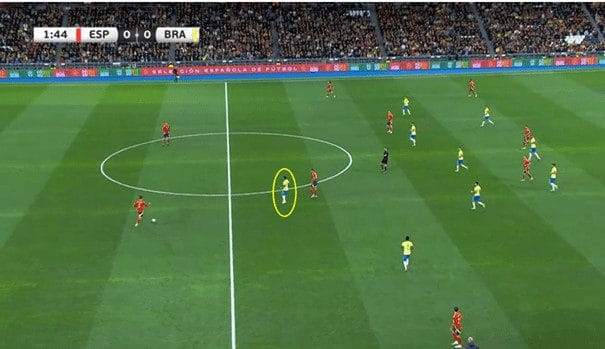
In this situation, Rodrygo ensures he closely marks the holding midfielder, preventing an easy pass into midfield. Instead of needlessly chasing the ball, he adjusts his position to cut off the passing lane to the 6.
Compared with the other two forwards, statistically, Endrick had fewer tackles and interceptions than both Vinicius Junior and Rodrygo. Often, his inability to defend certain situations shows clearly how much he must develop.
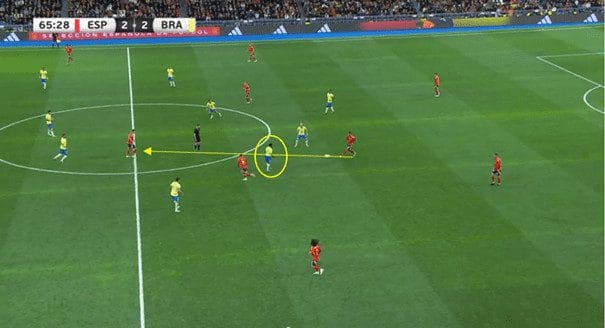
Here, Endrick has got back into the defensive unit to ensure his team is compact. However, he fails to scan to see what passing lanes need to be cut off. This allows for an easy pass to be played into the opposition’s centre-forward’s feet.
Goalscoring
Centre-forwards are judged on their goalscoring exploits. A striker who fails to find the back of the net on a regular basis will come under scrutiny, even if his team is playing well. Over the past season, Vinicius Junior has developed a real potency in front of goal. The 24-year-old had a career-best season of 24 goals in all competitions. What made this more impressive was that he achieved this by playing 14 games less than he did the previous season, when he scored 23 goals in all competitions.
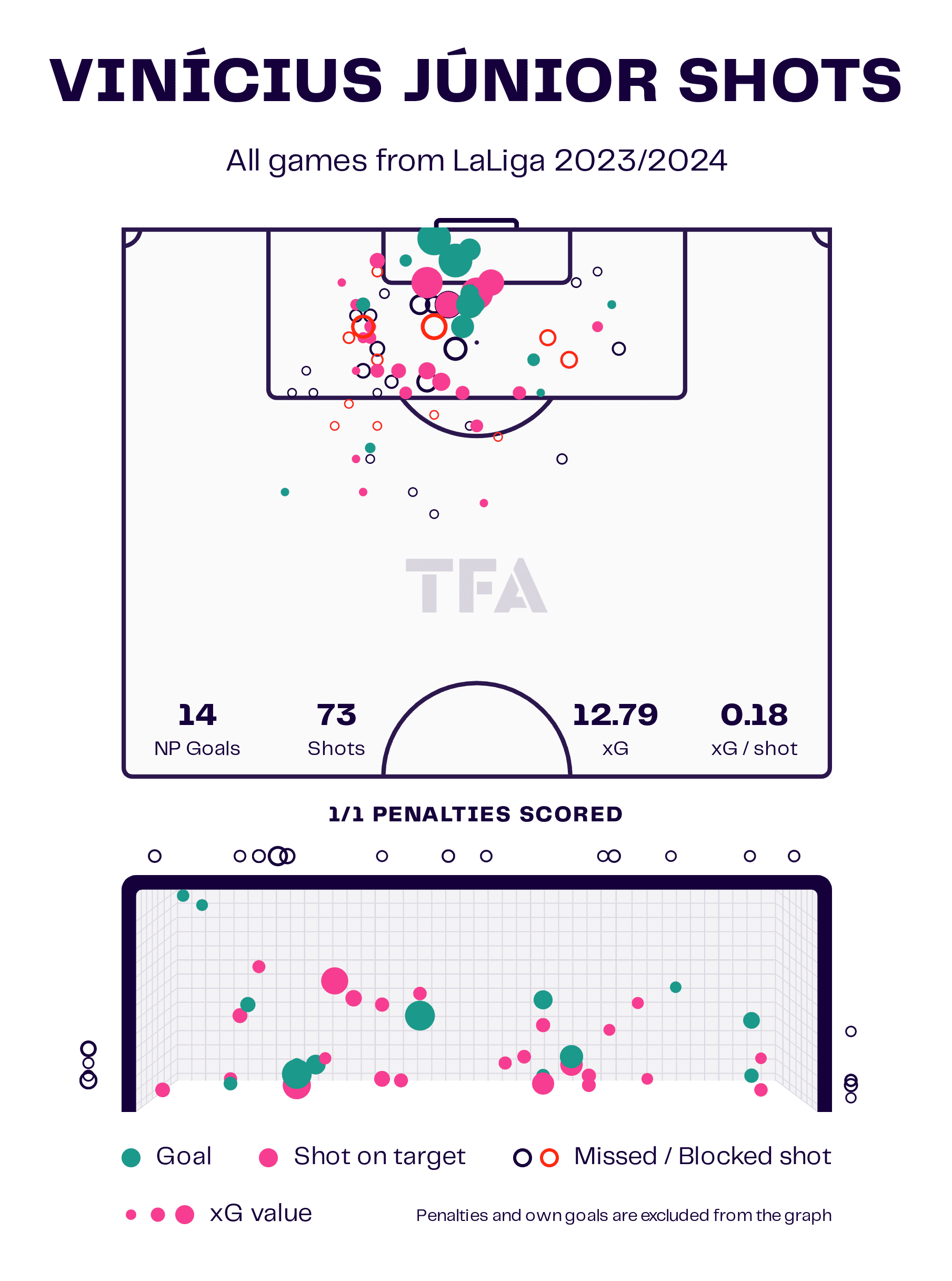
When analysing Vinicius’ finishing, it’s evident that he’s taking up the necessary positions to score goals. Compared with Rodrygo and Endrick, he has a shorter average shot distance. This can be seen in the locations where he’s scoring goals. A considerable number of his goals have come in and around the six-yard box. When comparing this with the areas of his goals last season it can be clearly seen that Vinicius has taken to his new role as playing as a centre-forward. A clear rise is also seen in his expected goals and expected goal-per-shot average from the previous season in La Liga.
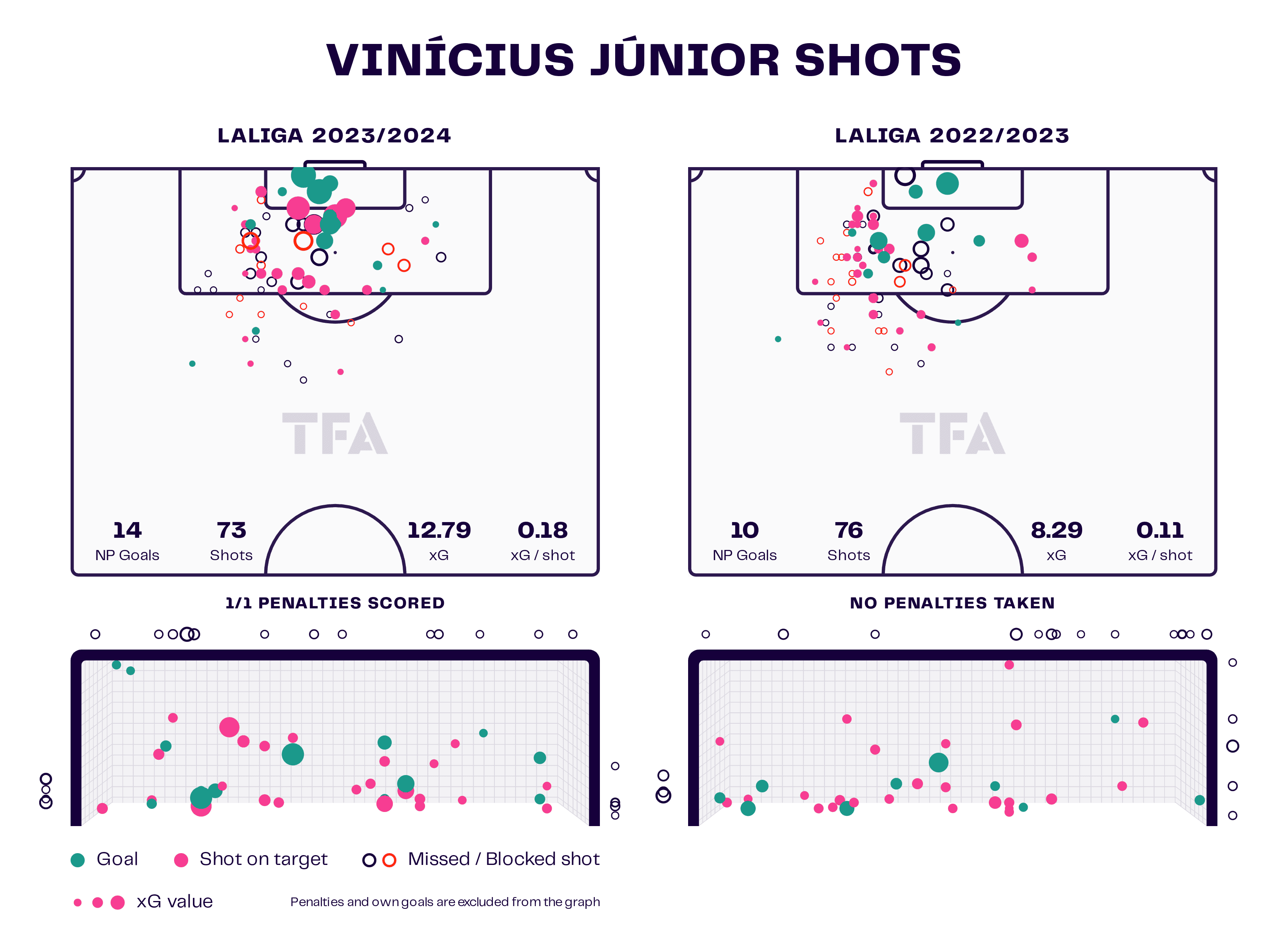
Rodrygo has become a real threat in front of goal over the past two seasons. This season, he bagged 17 goals, a slight decrease from the previous season, where he scored 19 goals in all competitions. Despite this, Rodrygo still has room for improvement when it comes to his ability to find the back of the net. In La Liga last season, he had a considerably lower conversion rate of 11% when compared with Vinicius and Endrick.
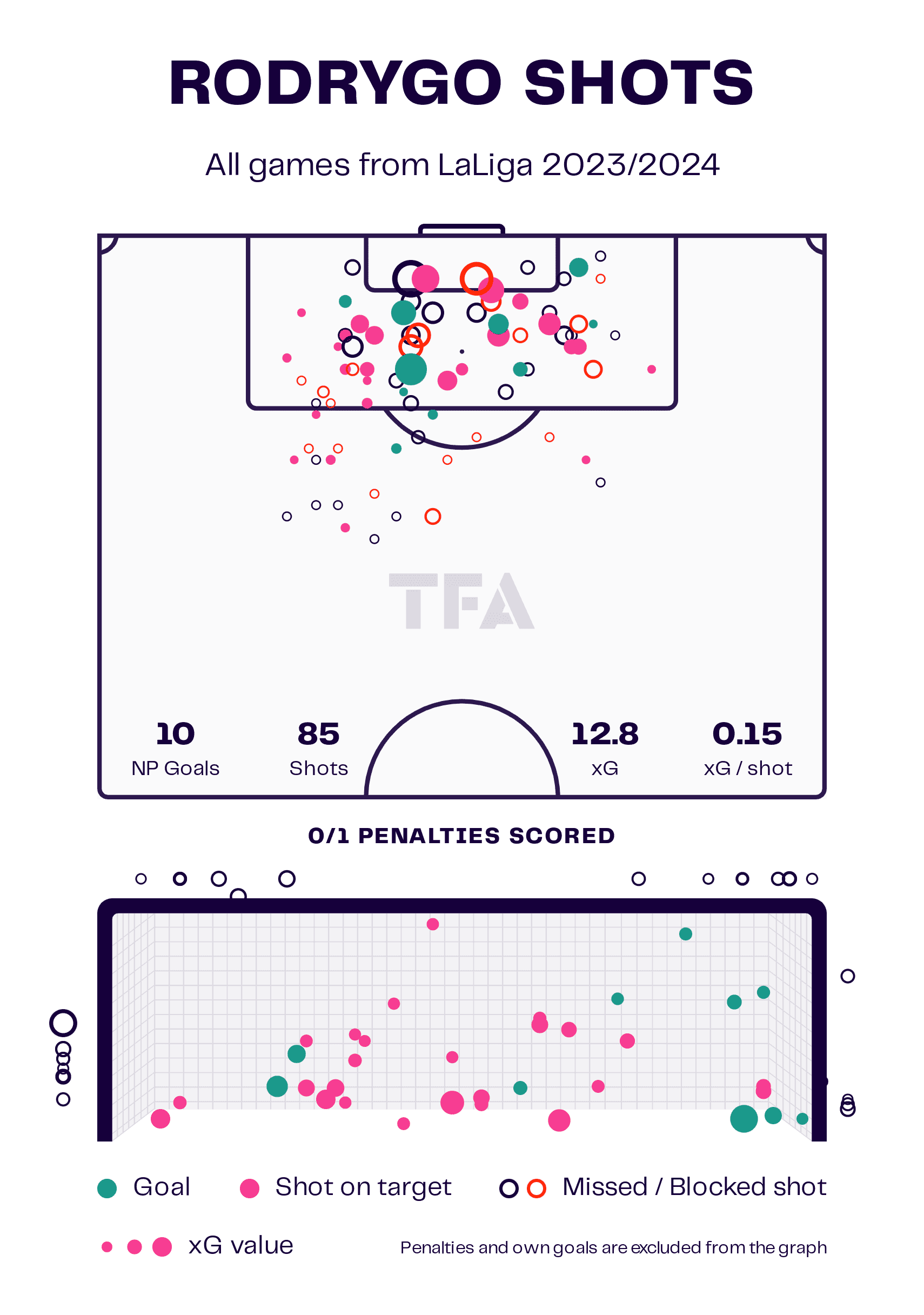
It can be clearly seen from the location of his shots that he has failed to score a considerable number of his shots around the six-yard box. In comparison with Vinicius and Endrick, he also has a far lower shots-on-target percentage, 40.7%. These factors prove he’s the weakest of the three when it comes to goalscoring.
While Rodrygo lacks the clinical edge, Endrick’s greatest strength is his ability to put away the chances that he gets. He has the highest conversion rate of the three players from last season, 22%. At Just 17 years old, he scored 11 goals in 31 games in his first full season in Brazil’s Serie A.
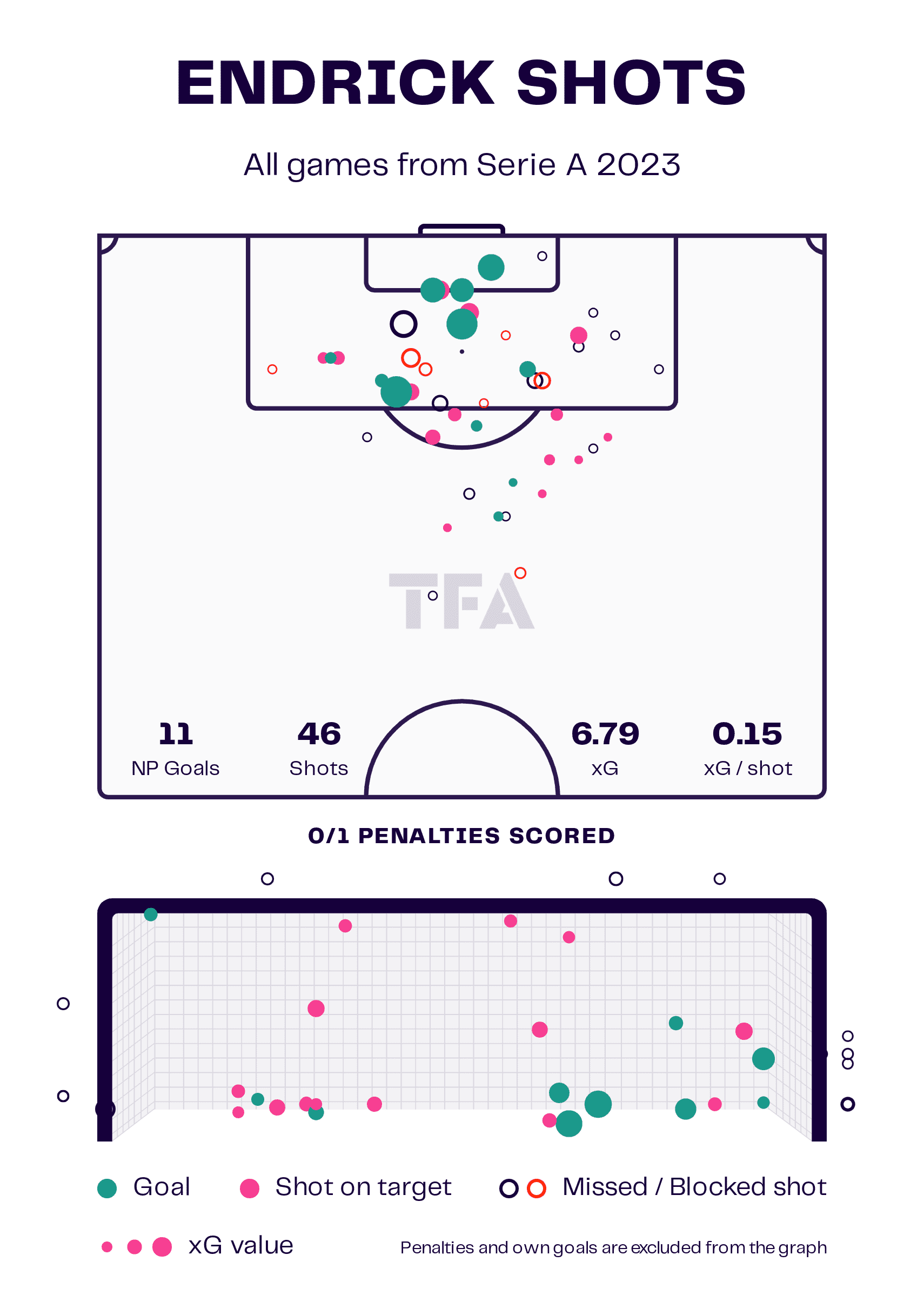
As seen before with Vinicius, a high proportion of Endrick’s goals have come in and around the six-yard box. However, it can be clearly seen from his shots that he has the ability to finish difficult chances. Endrick has exceeded his expected goals by 4.21, showing his ability to put away difficult opportunities.
Conclusion
I believe that all three of Real Madrid’s forwards will be used as the vocal point throughout the Copa America. They all clearly bring a different element to the role. Vinicius comes off the back of an incredible goalscoring season and has the ability with his movement to create confusion and stretch defences. Rodrygo, who I believe will be Brazil’s starting 9, will expertly link up play and provide a goalscoring threat as well. Endrick provides an option off the bench whose youthful enthusiasm and eye for goal could be the difference in tight matches.

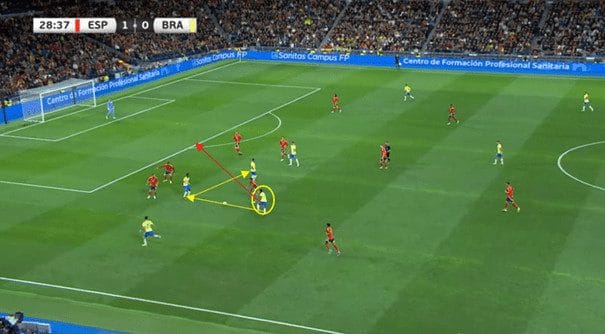



Comments